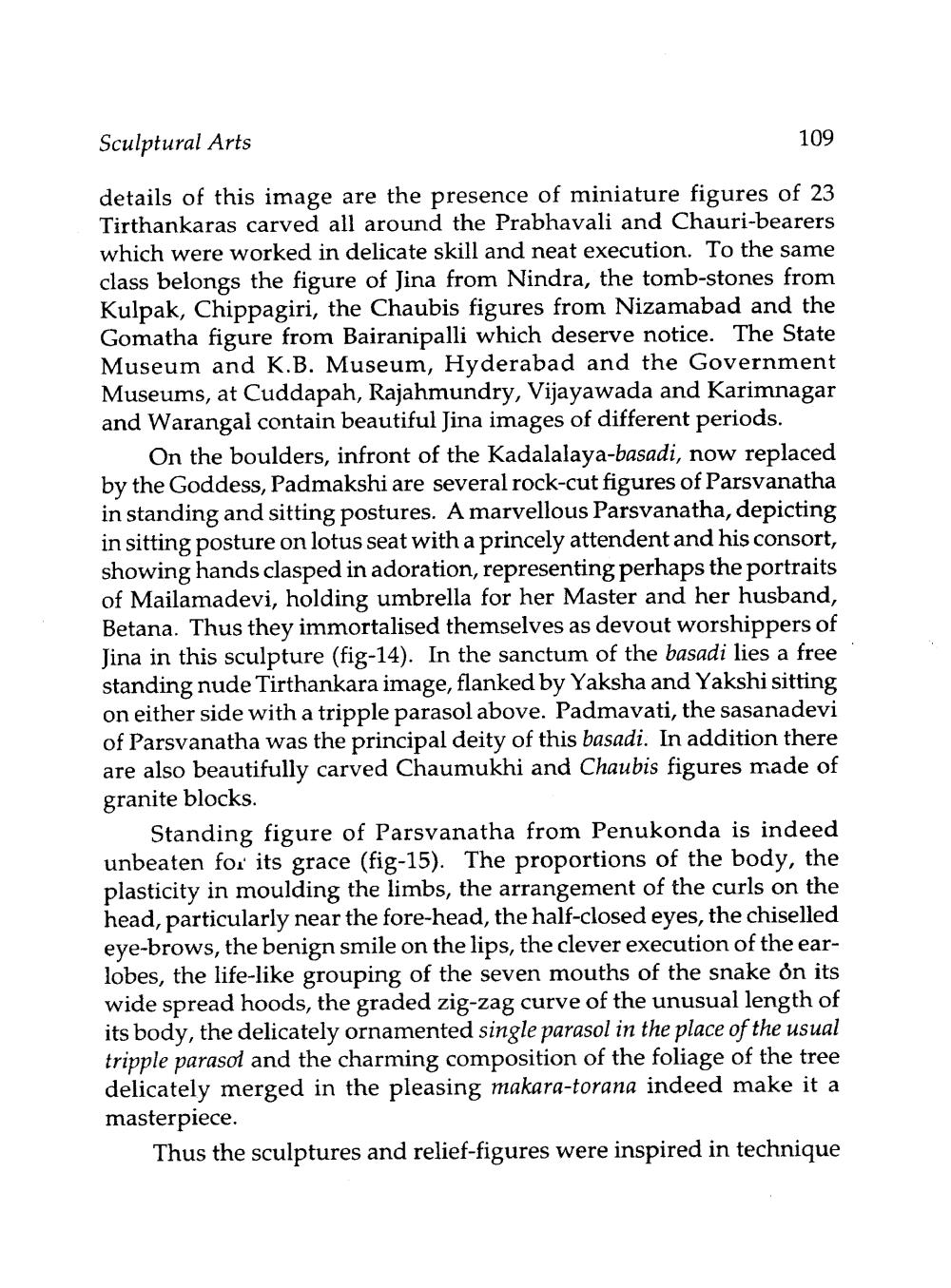________________
Sculptural Arts
109
details of this image are the presence of miniature figures of 23 Tirthankaras carved all around the Prabhavali and Chauri-bearers which were worked in delicate skill and neat execution. To the same class belongs the figure of Jina from Nindra, the tomb-stones from Kulpak, Chippagiri, the Chaubis figures from Nizamabad and the Gomatha figure from Bairanipalli which deserve notice. The State Museum and K.B. Museum, Hyderabad and the Government Museums, at Cuddapah, Rajahmundry, Vijayawada and Karimnagar and Warangal contain beautiful Jina images of different periods.
On the boulders, infront of the Kadalalaya-basadi, now replaced by the Goddess, Padmakshi are several rock-cut figures of Parsvanatha in standing and sitting postures. A marvellous Parsvanatha, depicting in sitting posture on lotus seat with a princely attendent and his consort, showing hands clasped in adoration, representing perhaps the portraits of Mailamadevi, holding umbrella for her Master and her husband, Betana. Thus they immortalised themselves as devout worshippers of Jina in this sculpture (fig-14). In the sanctum of the basadi lies a free
ling nude Tirthankara image, flanked by Yaksha and Yakshi sitting on either side with a tripple parasol above. Padmavati, the sasanadevi of Parsvanatha was the principal deity of this basadi. In addition there are also beautifully carved Chaumukhi and Chaubis figures made of granite blocks.
Standing figure of Parsvanatha from Penukonda is indeed unbeaten for its grace (fig-15). The proportions of the body, the plasticity in moulding the limbs, the arrangement of the curls on the head, particularly near the fore-head, the half-closed eyes, the chiselled eye-brows, the benign smile on the lips, the clever execution of the earlobes, the life-like grouping of the seven mouths of the snake on its wide spread hoods, the graded zig-zag curve of the unusual length of its body, the delicately ornamented single parasol in the place of the usual tripple parasol and the charming composition of the foliage of the tree delicately merged in the pleasing makara-torana indeed make it a masterpiece.
Thus the sculptures and relief-figures were inspired in technique




